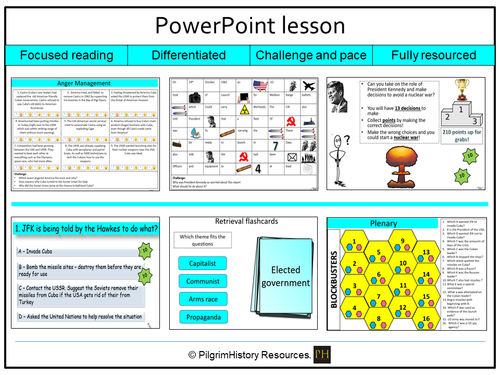


Cold War
The aim of this lesson is to analyse the causes and consequences of the Cuban Missile Crisis, its significance and its effect on future relations between the USA and USSR during the Cold War.
In an anger management task, students link various emotions to emojis as they learn why tensions (and therefore anger) between the USA and Cuba escalated following the coming to power of Fidel Castro and his subsequent alliance to the USSR.
In a text mapping exercise they analyse how Castro defied the West by organising the placement of nuclear missiles on Cuba and how Kennedy reacted to this report and the stark choices he faced, urged on by the Hawkes and Doves in his assembled special committee, Excomm.
Furthermore students undertake an interactive quiz which is designed to be engaging and challenging as they have to make 13 decisions in the 13 days of the crisis.
The plenary is an interactive blockbusters and there are links to video evidence as well a recall, retention and retrieval task.
The central enquiry of this and subsequent lessons is to ask why did civilians fear for their lives during the Cold War? Students will map out their ideas each lesson (which can be plotted in different colours or dates to show the progress of their learning and centred around the key question) and build up a picture of how these and different countries in the world responded and acted in this new nuclear age.
The resource comes in Powerpoint format if there is a wish to adapt and change and is differentiated.
I have also included suggested teaching strategies to deliver the lesson.
Something went wrong, please try again later.
Amazing resources as always. Informative and clear to follow with great lesson activities that stretch and engage students in equal measure. Amazing history lessons!
Superb resources
Report this resourceto let us know if it violates our terms and conditions.
Our customer service team will review your report and will be in touch.